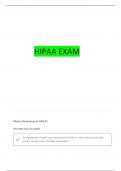Summary
LDAL - Papers Summary
- Course
- Institution
This document is written in English and is a summary of the 7 papers required for this subject. It discusses the introduction, methods and results of each paper in a short manner. I got an 8.5 for both exams :)
[Show more]





